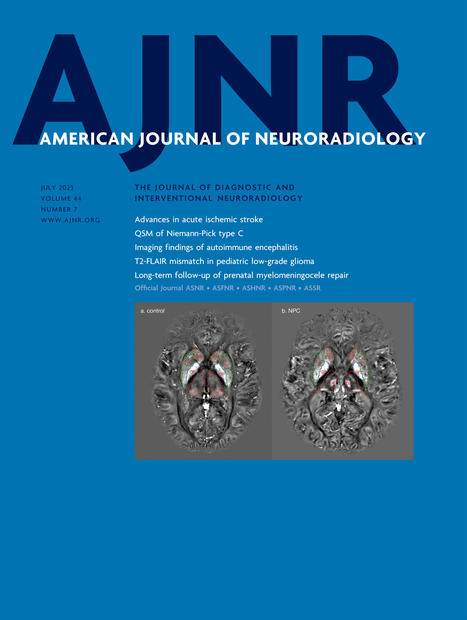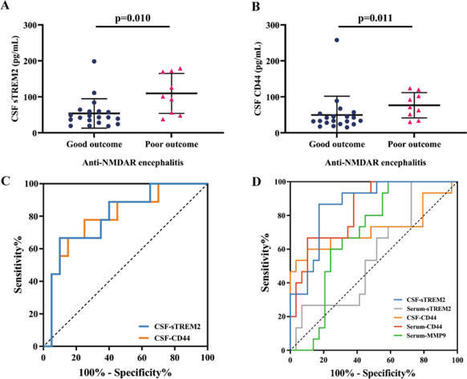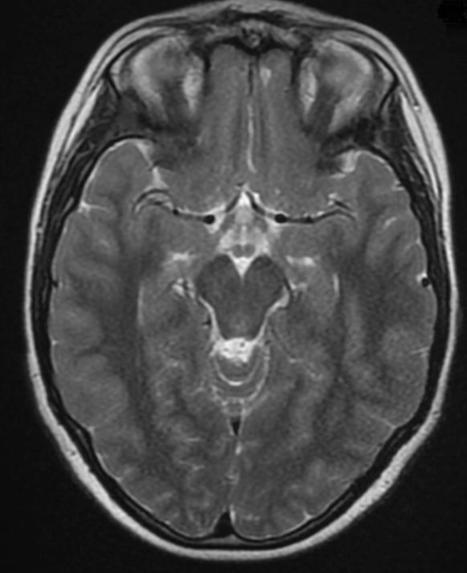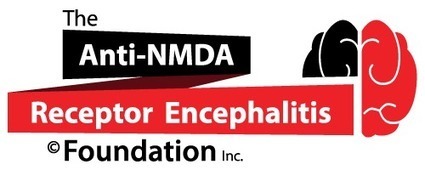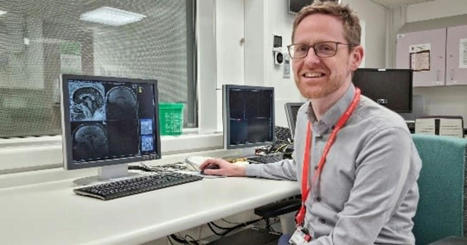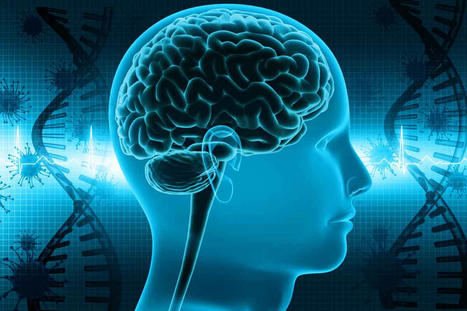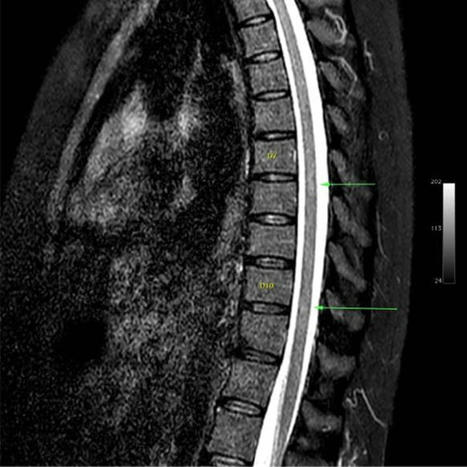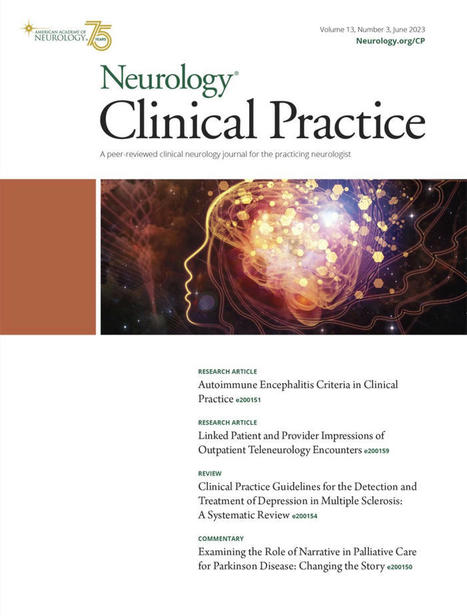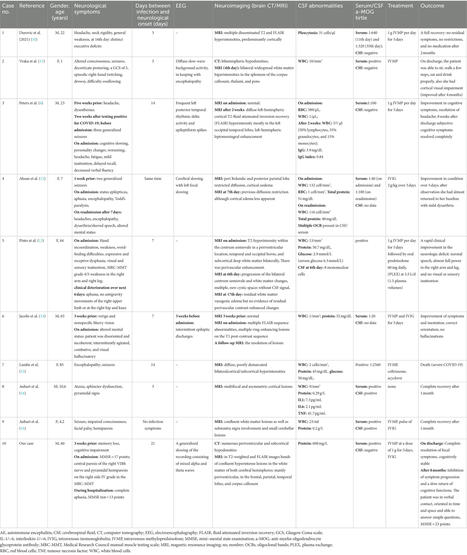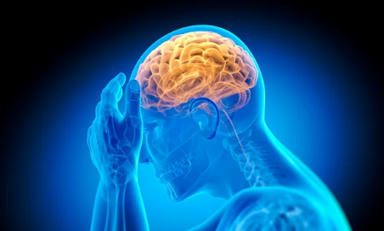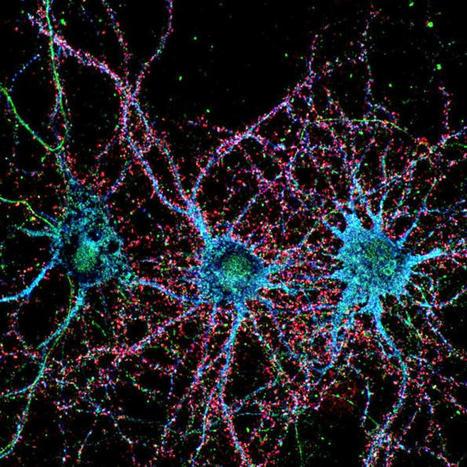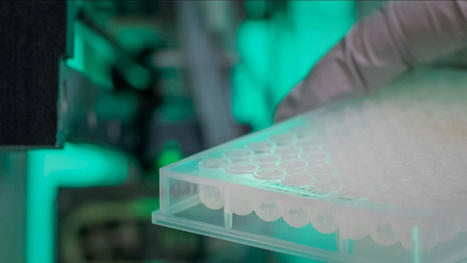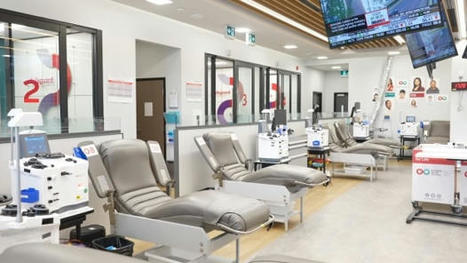Abstract Autoimmune neurology is a rapidly developing specialty driven by an increasing recognition of autoimmunity as the cause for a broad set of neurologic disorders and ongoing discovery of new neural autoantibodies associated with recognizable clinical syndromes. The diversity of clinical presentations, unique pathophysiology, and the complexity of available treatments requires a dedicated multidisciplinary team to diagnose and manage patients. In this article, we focus on antibody-associated autoimmune encephalitis (AE) to illustrate broader themes applicable to the specialty. We discuss common diagnostic challenges including the utilization of clinical assessment tools along with the determination of the prognostic significance of certain autoantibodies, with a focus on implications for long-term management. A growing body of literature demonstrates the long-term cognitive, behavioral, and physical sequelae of AE. Dedicated resources are needed to effectively manage these patients. These resources may be best provided by experienced neurology clinics in partnership with other neurologic subspecialists, as well as psychiatrists, neuropsychologists, and physical medicine and rehabilitation providers. Glossary AE=autoimmune encephalitis; AED=antiepileptic drug; CASE=Clinical Assessment Scale in Autoimmune Encephalitis; ICU=intensive care unit; LGI-1=leucine-rich, glioma-inactivated 1; mRS=modified Rankin Scale; NEOS=NMDAR Encephalitis One-Year Functional Status; NMDAR=NMDA receptor Over the past 2 decades, there has been rapid growth in the discovery of antibody-associated neurologic diseases. Autoantibodies that target neural antigens lead to a diverse phenotype of neurologic diseases. Diagnosing and managing neurologic autoantibody-associated disorders is challenging and requires a thoughtful approach. The spectrum of symptoms associated with these autoantibodies is vast—involving central, peripheral, and autonomic nervous systems—with contributors to disease encompassing paraneoplastic, parainfectious, immunotherapy-induced, and “unknown” (i.e., cryptogenic) causes.1,-,3 In this article, we not only explore common challenges in the initial diagnosis but also discuss the importance of long-term, comprehensive outpatient management of patients with antibody-associated autoimmune encephalitis (AE). In the acute setting, we focus on common challenges faced in the hospital while offering a perspective on potential prognostic tools. A comprehensive approach to care is proposed, emphasizing the need for multidisciplinary care led by a neurologist with experience in managing autoimmune neurologic disorders to mitigate the long-term physical and psychosocial devastation associated with these illnesses.4,-,6 We focus on adult-onset AE, as it is one of the most common antibody-associated neurologic disorders and has a robust array of literature to offer an evidence-based discussion. However, our themes apply broadly to other autoimmune neurologic disorders, including those involving the peripheral and autonomic nervous systems. Initial Diagnosis AE can produce a diverse set of symptoms that usually comprises both limbic and extralimbic dysfunction including impaired cognition and short-term memory, psychiatric symptoms, focal neurologic deficits, and altered level of consciousness. Patients may initially present to clinicians outside of neurology, such as psychiatry or internal medicine, which can delay prompt diagnosis and treatment.7,8 In 1 multisite study, AE was initially suspected in only 32% of patients despite 80% of patients presenting with symptoms and signs typical of an immune-mediated neurologic disorder.9 Even in tertiary care centers, there can be significant delays in diagnosis, contributing to delays in treatment and prolongation of hospital stay.10 Recognition of characteristic clinical syndromes is critical given the potential reversibility of these disorders. Clinical consensus criteria for AE, published in 2016,11 can help with this, offering objective measures to anchor the AE diagnosis. These criteria prioritized findings on clinical history and examination, in combination with the results of commonly available tests, with the goal of promoting early recognition and treatment independent of autoantibody test results. Autoantibody testing should still be obtained, recognizing that the identification of specific disease–associated autoantibodies may establish the diagnosis of definite AE, dictate the risk of underlying malignancy, guide treatment decisions, and inform long-term prognosis, including the risk of relapse. When possible, serum and CSF should be tested for autoantibodies because the sensitivity of commercially available antibody tests can be more sensitive in CSF (i.e., NMDA receptor [NMDAR] encephalitis12) and serum for others (i.e., leucine-rich, glioma-inactivated 1 [LGI-1] encephalitis13). Comprehensive but targeted autoantibody evaluations are usually preferred over single, specific autoantibody tests given the potential overlapping clinical syndromes, and the clinical significance assigned to the identification of more than 1 antibody.14 Clinicians should also be aware that a low titer result may also accompany other pathologically relevant results. In addition, the specificity and sensitivity can vary for different antibodies (table), so clinicians need to understand the diagnostic limitations of some autoantibody panels. View inline View popup Table Autoantibody Test Results That Need to Be Interpreted Cautiously Subtle or atypical presentations of AE may be more challenging to recognize, including LGI-1 antibody encephalitis, which may manifest with subacute cognitive decline.15 Certain subpopulations such as pediatric or geriatric cohorts may also pose challenges. Recent studies have shown that older patients (usually defined as 60 years or older) may have an immune-mediated disorder without evidence for CNS inflammation.16 Evaluating for other systemic findings such as gastrointestinal symptoms or progressive sleep dysfunction may be the only diagnostic clue in patients presenting with subacute cognitive decline.16 Subtle clues on diagnostic testing such as unique CSF oligoclonal bands may also be central to the diagnosis.17 A comprehensive review of established antibody-mediated disorders is beyond the scope of this article but well covered in other sources.7,18 Acute Prognosis and Treatment Patients with AE need specialized care. Most cases are likely to require advanced diagnostic imaging and treatment by specially trained clinicians with AE experience. Complex patients may require intensive care unit (ICU) management for complications including hypoventilation, bradycardia, severe blood pressure changes, encephalopathy (with failure to protect the airway), seizures (with or without status epilepticus), and severe movement disorders, including potential neuroleptic malignant syndrome. Patients with NMDAR encephalitis are at an especially high risk of autonomic dysfunction, requiring close monitoring (figure 1). Patients with AE have also been reported to have a higher rate of severe sepsis and shock when compared with the general ICU population.19 Figure 1 Typical Clinical Course Associated With Anti-NMDAR Encephalitis ICU = intensive care unit; IVMP = IV methylprednisolone; mRS = modified Rankin Scale; NEOS = NMDAR Encephalitis One-Year Functional Status; NMDAR = anti-NMDA receptor. Reprinted with permission, Cleveland Clinic Center for Medical Art & Photography ©2021. All Rights Reserved. Providers with experience in managing AE can offer important guidance to avoid undertreatment or overtreatment, thereby avoiding the risk for complications. For example, differentiating seizure-related activity from dyskinetic or stereotypic movements is essential, as unnecessary administration of antiepileptic drugs (AEDs) could prolong recovery. Likewise, an understanding of the time to efficacy of commonly administered immunomodulatory treatments can prevent side effects associated with excessive immunosuppression. Recommendations governing the acute treatment in AE are derived from expert opinion, case series, and case reports. Current data suggest that early initiation of commonly available therapies—namely, high-dose steroids and IV immunoglobulin or plasma exchange—and timely escalation to second-line immunotherapy may lead to improved clinical outcomes, although randomized controlled trials are needed to inform optimal treatment approaches.4,20 Detailed knowledge of individual prognostic factors is essential to accurately inform decision making. Consultation with a neurologist with experience in AE can help outline the typical timeline and prognosis for recovery, which can provide context for families and caregivers alike. A multicenter AE ICU cohort study conducted in Germany illustrated that despite the severity of the disease, the majority experienced significant recovery before discharge.21 Thus, it is imperative that clinicians are patient in the course of AE recovery, as improvement can be delayed and may not directly correlate with laboratory or imaging findings. The Clinical Assessment Scale in Autoimmune Encephalitis (CASE) score was developed as a more specialized alternative to the modified Rankin Scale (mRS), which has been historically used as an outcome measure in retrospective AE studies. This score is based on 9 items—seizure, memory dysfunction, psychiatric symptoms, consciousness, language difficulties, dyskinesia/dystonia, gait instability and ataxia, brainstem dysfunction, and motor weakness—with higher scores corresponding to greater severity of illness. This scale helps to overcome some of the current limitations in the initial assessment of AE, but more studies are needed to determine whether treatment decisions should be made in response to scores and scores relate to long-term outcomes.22 Given the slow and variable trajectory in recovery, the NMDAR Encephalitis One-Year Functional Status (NEOS) score was created to predict functional status for patients (figure 1). This 5-point score predicts an mRS at ≥3 at 1 year based on ICU admission, treatment delay by >4 weeks, lack of clinical improvement after 4 weeks of treatment, abnormal brain MRI, and a significant CSF pleocytosis (>20 cells/μL). This score could help identify patients who may benefit from more aggressive or longer duration immunotherapy or from novel therapies. This study also reaffirmed that patients with a high NEOS score can still achieve function independence even 2 years after the initial diagnosis.5 Prospective validation of both the CASE and NEOS in a variety of populations will further strengthen confidence in these encephalitis-specific instruments and allow multidisciplinary teams to appropriately allocate resources after discharge to achieve optimal outcomes. Care Coordination and Discharge Planning Targeted interventions at the time of discharge can improve patient outcomes, reduce burden on family members, and decrease hospital readmissions. Ideally, interventions should include adequate education for family members and caregivers. It is also vital to consider the perspective of caregivers, recognizing the potential contributions of caregiver mental and physical health, coping strategies, and access to resources to patient outcomes. These individuals are integral players in patients' recovery but also have their own physical and psychological needs.23 A national survey through the Encephalitis Society and the Autoimmune Encephalitis Alliance found communication and expectations for caregivers to be lacking—a finding that was associated with higher levels of caregiver burden. In particular, poor transition from the inpatient to outpatient setting was a strong factor for higher levels of burden and highlighted the need for a comprehensive follow-up in a neurology clinic.23 It is important to identify patients in the hospital setting to ensure proper follow-up. In our experience, specialty referrals often occur late, including after hospital discharge. This potentially leaves patients undertreated while being sent home or to a rehabilitation prematurely or without sufficient care plans in place. Our proposed clinic model allows for timely referrals especially as patients are transitioned from the inpatient service while also offering treatment and surveillance of suspected and confirmed AE cases. We typically arrange for close follow-up (e.g., every 3–4 months) at the time of diagnosis or hospital discharge. These follow-up appointments can be extended if patients remain stable to every 6–12 months, although these decisions must be made in the context of individual patients. Multidisciplinary Follow-up An ideal outpatient model consists of a multidisciplinary clinical team led by a neurologist with experience in autoimmune neurologic disorders. As the team leader, these neurologists can leverage the expertise of other members to address diagnostic uncertainty while providing anticipatory guidance and a detailed care plan. It is also paramount to look beyond the borders of neurology and to integrate other medical disciplines in the disease management (figure 2), similar to the approach taken for patients with other complicated neurologic disorders (e.g., amyotrophic lateral sclerosis). In this context, coordinated clinics have been shown to improve patients' care and quality of life while shifting care away from hospital-based health services, resulting in a potential cost savings to patients and health care systems.24 Figure 2 Autoimmune Neurology Interdisciplinary Care Model ADLs = activities of daily living; GI = gastroenterology; OT = occupational therapy; PM&R = physical medicine and rehabilitation; PT = physical therapy. Reprinted with permission, Cleveland Clinic Center for Medical Art & Photography ©2021. All Rights Reserved. We should note that all the specialists do not need to reside within the same space, although a coordinated clinic can have obvious benefits for clinicians and providers alike. The linchpin to deliver multidisciplinary care is strong communication. This approach may require ongoing reassessment of interdepartmental workflows related to care delivery including coordinating appointment for patients. In addition, although team members may vary from center to center, the core principle remains the same: provide expert, holistic assessment, and treatment. Neurologist With Experience in Treating Autoimmune Disorders These specialists have specific training and knowledge that can promote early disease recognition. They also have detailed knowledge of and access to the newest generation of targeted IV monoclonal therapies while mitigating potential long-term complications from these therapies such as osteoporosis, infections, and progressive multifocal leukoencephalopathy. These specialists can also offer expertise in seronegative autoimmune neurologic cases, which are particularly challenging. For example, a short immunotherapy trial may be pursued when seronegative AE is suspected. There is limited evidence around these trials, and we would caution clinicians to have objective measures to determine the true efficacy of treatment. These measures may be framed around the most prominent or troublesome objective symptom, optimizing the ability to assess response to therapy and avoiding the need to rely on subjective perception of response, which is particularly susceptible to bias. For example, clinicians can use the Scale for the Assessment and Rating of Ataxia,25 the Symbol Digit Modalities Test, or the Montreal Cognitive Assessment 26 for reliable scores to measure the success of a trial. In addition to understanding the role of empiric immunotherapy trials, neurologists should have the experience and confidence to consider discontinuation of these trials based on objective findings or lack thereof. Neurologic Subspecialities Immune-mediated disorders may cause wide-ranging neurologic manifestations, necessitating broad consultation across neurologic and non-neurologic subspecialties. This can include cognitive and behavioral neurology (e.g., dementia), movement disorders (e.g., chorea, myoclonus, and cerebellar syndrome), epilepsy (e.g., autoimmune-related seizures), neuro-oncology (e.g., paraneoplastic disorders), sleep medicine (e.g., sleep apnea, narcolepsy, and disorders of arousal), and neuromuscular disorders (e.g., hyperexcitability disorders). An epileptologist with experience in treating AE is a particularly important partner. Immune-mediated epileptogenesis is a distinct entity recognized by the International League Against Epilepsy. Seizures are a common finding in AE and can be the manifestation of neurologic dysfunction that prompts patients to initially seek care. Even in the absence of overt seizures, repeated assessment for seizures including EEG monitoring is usually warranted.27 Clinical features that would support an immune-mediated basis include acute/subacute onset of focal seizures with an unusually high seizure frequency and a lack of response to standard AEDs.28 Once an autoimmune disorder is properly treated, AEDs may be tapered under the supervision and follow-up of an epileptologist.29,30 Neuropsychology Neuropsychologists play an important role in long-term follow-up, given the frequency and severity of cognitive impairment in recovering patients. Cognitive impairment can negatively affect employment, social engagement, and treatment adherence.31 Given these effects, appropriate identification and treatment of the specific domains affected in a patient endorsing cognitive dysfunction is especially warranted. Neuropsychologists can also help elucidate underlying tangentially related or confounding mood and/or behavioral symptoms. Psychiatry The recent focus on AE has further blurred the artificial distinction between neurology and psychiatry because most patients develop neuropsychiatric symptoms. In the end, collaboration between both disciplines is critical. Refractory psychosis may require the use of high-potency antipsychotic agents, which are associated with increased risks of extrapyramidal side effects, seizures' threshold, autonomic symptoms, neuroleptic malignant syndrome (especially in NMDAR encephalitis), and sedation.32,33 In addition, the medication used to treat AE can have a significant burden of psychiatric side effects (e.g., corticosteroids causing agitation and AEDs leading sedation). Many patients have persistent neuropsychiatric symptoms years out from their initial diagnosis.34 In NMDAR encephalitis, many patients will be on long-term psychotropic medication while also experiencing emotional lability and impulse control problems.35 Psychiatrists, especially those with experience in treating AE, are vital members of the treatment team. Collaboration between neurologists and mental health clinicians during hospitalization, at discharge, and throughout outpatient treatment is fundamental and can have a far-reaching effect on outcomes in AE cohorts.8 Rehabilitation Services Rehabilitation services are an integral part of the treatment and can focus on both physical and emotional well-being. This team encompasses physical medicine and rehabilitation specialists, psychologists, physical therapists, occupational therapists, social workers, and speech therapists. These services focus on a broad range of functions that can include ability to perform activities of daily living, mobility, return to work, and driving. The specific rehabilitation plan including whether the inpatient or outpatient setting is most appropriate is jointly developed between members of the treatment team. A medical social worker can also provide psychosocial support and evaluate for financial needs. They can connect patients/caregivers to advocacy groups, which can play a critical role in the recovery process and patient empowerment. Primary Care Clinicians Primary care clinicians play an essential role in providing support with ongoing health maintenance and managing comorbidities. This can also include counseling on healthy lifestyle measures that may promote recovery (e.g., smoking cessation, regular exercise, and diet) while ensuring that age-appropriate screening measures are completed. Furthermore, they can ensure that a patient's vaccination schedule is up to date because most of the immunotherapy used in the treatment of AE alter the immune response, which may be associated with an increased risk of infections and an impaired ability to mount an immune response. Proactive management through a partnership of patients, caregivers, and primary care clinicians is vital for long-term AE care. Long-term Prognosis A growing body of literature demonstrates the long-term cognitive, psychiatric, and physical sequelae experienced by patients with AE. In particular, nonmotor outcomes can be overlooked in routine practice but are of increasing importance to recovering patients and caregivers. In particular, cognitive impairment and psychiatric/behavioral sequelae complicate recovery and contribute to morbidity.8,36 Evidence citing “good outcomes” in AE is commonly defined as an mRS score of ≤2, which offers a very broad range in recovery as the scale is heavily weighted toward motor function. This measure neglects more meaningful outcomes such as resumption of gainful employment or schooling and establishment of personal relationships.6 It is imperative to consider these professional and social consequences because AE usually strikes young adults. Impairments relating to social behaviors can be slow to recovery and may limit functional independence. A group of nearly 60 patients with NMDAR encephalitis surveyed years out from their index diagnosis still identified factors foreshadowing a poor, long-term prognosis. Nearly one-third did not resume their prior work or schooling after their illness, whereas 20% of patients required special accommodations because of persistent deficits.8,37 Behavioral outcomes in broader cohorts (including antibody-negative AE patients) have shown similar results. In 1 study, only 50% of the patients had returned to work despite the fact that 85% were employed before the onset of symptoms. Most patients still required help with advanced activities of daily living including medication management, transportation, or managing household finances. When analyzing adaptive behaviors, patients scored lower on all measured domains. Of interest, patients with NMDAR encephalitis appeared to have better outcomes than did those with other forms of AE. This may be related to the increased clinical awareness of this disorder and offer hope that prompt recognition of other AE disorders can offer long-term improvement in functional domains.35 Other potential explanations may include the fact that patients with NMDAR encephalitis are typically younger with a greater potential for recovery,37 although there is evidence that patients on either age extreme (i.e., young children and older adults) tend to have worse clinical outcomes.4 Detailed neuropsychological profiles have confirmed executive dysfunction along with impairment in attention and working/episodic memory in some individuals' years after the NMDAR encephalitis index admission. These deficits are concordant with advanced imaging analyses. Resting-state functional MRI and diffusion tensor imaging have revealed reduced hippocampal functional connectivity and atrophy in patients with NMDAR encephalitis38 and LGI-1 antibody encephalitis.34 Safe return to driving is integral to a patient's independence, autonomy, and work/school enrollment. A study conducted at Washington University in St. Louis, Missouri, showed dynamic changes in the driving patterns of 5 recovering patients with NMDAR or LGI-1 antibody-mediated encephalitis. These patients took frequent, shorter trips earlier in their recovery, which may reflect a type of “self-regulation.” With time, these patients had normalization in their driving patterns, although there was a higher proportion of aggressive driving actions in the AE cohort when compared with controls.39 This group did not investigate whether there was any visual spatial dysfunction such as having trouble navigating new routes or forgetting where they parked their car. In another longitudinal LGI-1 study, 11 patients with reportedly good outcomes (i.e., mRS 0–2) showed inferior spatial recognition scores. This type of dysfunction can have pronounced impact on daily function and can be difficult to capture on our current outcome measures.13 Incorporating Research Into Multidisciplinary Care International, multicenter randomized controlled trials are needed to guide treatment in AE and limit variability in treatment approaches.40 A number of off-label immunotherapies have been proposed for AE, but there is no consensus on the type, timing, dose, or route of delivery of these agents.41 High-quality evidence is needed to inform the selection of safe and efficacious therapies. One of the strengths of a dedicated neurology clinic for autoimmune patients is the ability to offer unique opportunities for patients through clinical trial participation. These multidisciplinary autoimmune neurology clinics would be ideally positioned to serve as a portal to these studies. Research can span many relevant areas such as drug development, neuroimaging, genomics, quality of life, and behavioral studies including evaluation of neurocognitive outcomes. Furthermore, a biospecimen repository may be effectively used in these clinics to facilitate future research projects. Conclusion Autoimmune neurology is a rapidly developing subspecialty. Familiarity and awareness of different antibody-associated phenotypes can help to ensure prompt diagnosis and treatment. In cases that are less clear, a sound diagnostic approach anchored on objective clinical findings is important for optimizing outcomes. Clinical monitoring and treatment must expand beyond the acute care setting. A growing body of literature illustrates prolonged periods of recovery complicated by behavioral dysfunction and neuropsychiatric symptoms in the months to years after the diagnosis. These findings highlight the importance of comprehensive teams with expertise in autoimmune neurologic disorders. The ultimate goal is to provide optimal, long-term outpatient care coordinated among clinicians while anticipating the needs of the patients and caregivers. Study Funding The authors report no targeted funding. Disclosure J.R. Abbatemarco and S.J. Rodenbeck declare no disclosures relevant to the manuscript. G.S. Day: supported by a career development grant from the NIH (K23AG064029); he owns stock in ANI Pharmaceuticals (a generic pharmaceutical company); he serves as a topic editor for DynaMed (EBSCO), overseeing the development of evidence-based educational content, a consultant for Parabon Nanolabs (Inc.), and as the Clinical Director of the Anti-NMDA Receptor Encephalitis Foundation (Inc., Canada uncompensated). M.J. Titulaer: received funding from the Netherlands Organization for Scientific Research (NWO, Veni incentive), ZonMw (Memorabel program), and the Dutch Epilepsy Foundation (NEF 14-19 and 19-08); has filed a patent, on behalf of the Erasmus MC, for methods for typing neurologic disorders and cancer, and devices for use therein; has received research funds for serving on a scientific advisory board of MedImmune LLC, for consultation at Guidepoint Global LLC, for consultation at UCB, and for teaching colleagues by Novartis; and has received an unrestricted research grant from Euroimmun AG and from CSL Behring. A.K. Yeshokumar: currently an employee of Bristol Myers Squibb (but was not at the time that this work was completed). S.L. Clardy: editor, Neurology®Podcast and Neurology Minute; research and/or clinical fellowship support from the Western Institute for Veterans Research (WIVR), the Siegel Rare Neuroimmune Association (SRNA), the Sumaira Foundation for NMO, Alexion, Viela Bio, and the Barbara Gural Steinmetz Foundation; and consulting/ad board: Alexion, Genentech, Viela Bio, Guidepoint, and ExpertConnect (majority of fees paid to the University of Utah Development account). Go to Neurology.org/NN for full disclosures. Appendix Authors Footnotes Go to Neurology.org/NN for full disclosures. Funding information is provided at the end of the article. The Article Processing Charge was funded by the authors. Received April 2, 2021. Accepted in final form May 3, 2021. Copyright © 2021 The Author(s). Published by Wolters Kluwer Health, Inc. on behalf of the American Academy of Neurology. This is an open access article distributed under the terms of the Creative Commons Attribution-NonCommercial-NoDerivatives License 4.0 (CC BY-NC-ND), which permits downloading and sharing the work provided it is properly cited. The work cannot be changed in any way or used commercially without permission from the journal. References 1.↵Dalmau J, Graus F. Antibody-mediated encephalitis. N Engl J Med. 2018;378(9):840-851.OpenUrlCrossRefPubMed 2.↵Zekeridou A, Lennon VA. Neurologic autoimmunity in the era of checkpoint inhibitor cancer immunotherapy. Mayo Clin Proc. 2019;94(9):1865-1878.OpenUrl 3.↵Kunchok A, Aksamit AJ Jr., Davis JM III., et al. Association between tumor necrosis factor inhibitor exposure and inflammatory central nervous system events. JAMA Neurol. 2020;77(8):937-946.OpenUrl 4.↵Titulaer MJ, McCracken L, Gabilondo I, et al. Treatment and prognostic factors for long-term outcome in patients with anti-NMDA receptor encephalitis: an observational cohort study. Lancet Neurol. 2013;12(2):157-165.OpenUrlCrossRefPubMed 5.↵Balu R, McCracken L, Lancaster E, Graus F, Dalmau J, Titulaer MJ. A score that predicts 1-year functional status in patients with anti-NMDA receptor encephalitis. Neurology. 2019;92(3):e244-e252.OpenUrlCrossRefPubMed 6.↵Binks SNM, Veldsman M, Easton A, et al. Residual fatigue and cognitive deficits in patients after leucine-rich glioma-inactivated 1 antibody encephalitis. JAMA Neurol. 2021;78(5):617-619.OpenUrl 7.↵Lopez-Chiriboga AS, Flanagan EP. Diagnostic and therapeutic approach to autoimmune neurologic disorders. Semin Neurol. 2018;38(3):392-402.OpenUrlCrossRefPubMed 8.↵Blum RA, Tomlinson AR, Jette N, Kwon CS, Easton A, Yeshokumar AK. Assessment of long-term psychosocial outcomes in anti-NMDA receptor encephalitis. Epilepsy Behav. 2020;108:107088.OpenUrl 9.↵Baumgartner A, Rauer S, Hottenrott T, et al. Admission diagnoses of patients later diagnosed with autoimmune encephalitis. J Neurol. 2019;266(1):124-132.OpenUrl 10.↵Cohen J, Sotoca J, Gandhi S, et al. Autoimmune encephalitis: a costly condition. Neurology. 2019;92(9):e964-e972.OpenUrl 11.↵Graus F, Titulaer MJ, Balu R, et al. A clinical approach to diagnosis of autoimmune encephalitis. Lancet Neurol. 2016;15(4):391-404.OpenUrlCrossRefPubMed 12.↵Brooks J, Yarbrough ML, Bucelli RC, Day GS. Testing for N-methyl-D-aspartate receptor autoantibodies in clinical practice. Can J Neurol Sci. 2019 Sep 30:1-27. 13.↵van Sonderen A, Thijs RD, Coenders EC, et al. Anti-LGI1 encephalitis: clinical syndrome and long-term follow-up. Neurology. 2016;87(14):1449-1456.OpenUrlPubMed 14.↵Kim AE, Kang P, Bucelli RC, et al. Autoimmune encephalitis with multiple autoantibodies: a diagnostic and therapeutic challenge. Neurologist. 2018;23(2):55-59.OpenUrl 15.↵Arino H, Armangue T, Petit-Pedrol M, et al. Anti-LGI1-associated cognitive impairment: presentation and long-term outcome. Neurology. 2016;87(8):759-765.OpenUrlPubMed 16.↵Escudero D, Guasp M, Arino H, et al. Antibody-associated CNS syndromes without signs of inflammation in the elderly. Neurology. 2017;89(14):1471-1475.OpenUrlCrossRefPubMed 17.↵Hebert J, Gros P, Lapointe S, et al. Searching for autoimmune encephalitis: beware of normal CSF. J Neuroimmunol. 2020;345:577285.OpenUrl 18.↵Leypoldt F, Armangue T, Dalmau J. Autoimmune encephalopathies. Ann NY Acad Sci. 2015;1338:94-114.OpenUrlCrossRefPubMed 19.↵SepNet Critical Care Trials Group. Incidence of severe sepsis and septic shock in German intensive care units: the prospective, multicentre INSEP study. Intensive Care Med. 2016;42(12):1980-1989.OpenUrlPubMed 20.↵Nosadini M, Mohammad SS, Ramanathan S, Brilot F, Dale RC. Immune therapy in autoimmune encephalitis: a systematic review. Expert Rev Neurother. 2015;15(12):1391-1419.OpenUrlCrossRefPubMed 21.↵Schubert J, Bramer D, Huttner HB, et al. Management and prognostic markers in patients with autoimmune encephalitis requiring ICU treatment. Neurol Neuroimmunol Neuroinflamm. 2019;6(1):e514.OpenUrl 22.↵Lim JA, Lee ST, Moon J, et al. Development of the clinical assessment scale in autoimmune encephalitis. Ann Neurol. 2019;85(3):352-358.OpenUrlCrossRefPubMed 23.↵Tomlinson AR, Blum RA, Jette N, Kwon CS, Easton A, Yeshokumar AK. Assessment of care transitions and caregiver burden in anti-NMDA receptor encephalitis. Epilepsy Behav. 2020;108:107066.OpenUrl 24.↵Chio A, Bottacchi E, Buffa C, Mutani R, Mora G, Parals. Positive effects of tertiary centres for amyotrophic lateral sclerosis on outcome and use of hospital facilities. J Neurol Neurosurg Psychiatry. 2006;77(8):948-950. 25.↵Schmitz-Hubsch T, du Montcel ST, Baliko L, et al. Scale for the assessment and rating of ataxia: development of a new clinical scale. Neurology. 2006;66(11):1717-1720.OpenUrlCrossRefPubMed 26.↵Hebert J, Day GS, Steriade C, Wennberg RA, Tang-Wai DF. Long-term cognitive outcomes in patients with autoimmune encephalitis. Can J Neurol Sci. 2018;45(5):540-544.OpenUrl 27.↵Yeshokumar AK, Coughlin A, Fastman J, et al. Seizures in autoimmune encephalitis-A systematic review and quantitative synthesis. Epilepsia. 2021;62(2):397-407.OpenUrl 28.↵Dubey D, Alqallaf A, Hays R, et al. Neurological autoantibody prevalence in epilepsy of unknown etiology. JAMA Neurol. 2017;74(4):397-402.OpenUrl 29.↵Quek AML, O'Toole O. Autoimmune epilepsy: the evolving science of neural autoimmunity and its impact on epilepsy management. Semin Neurol. 2018;38(3):290-302.OpenUrl 30.↵de Bruijn M, van Sonderen A, van Coevorden-Hameete MH, et al. Evaluation of seizure treatment in anti-LGI1, anti-NMDAR, and anti-GABABR encephalitis. Neurology. 2019;92(19):e2185-e2196.OpenUrlPubMed 31.↵Nicolle DCM, Moses JL. A systematic review of the neuropsychological sequelae of people diagnosed with anti N-methyl-D-aspartate receptor encephalitis in the acute and chronic phases. Arch Clin Neuropsychol. 2018;33(8):964-983.OpenUrl 32.↵Warren N, Siskind D, O'Gorman C. Refining the psychiatric syndrome of anti-N-methyl-d-aspartate receptor encephalitis. Acta Psychiatr Scand. 2018;138(5):401-408.OpenUrl 33.↵Lejuste F, Thomas L, Picard G, et al. Neuroleptic intolerance in patients with anti-NMDAR encephalitis. Neurol Neuroimmunol Neuroinflamm. 2016;3(5):e280. 34.↵Finke C, Pruss H, Heine J, et al. Evaluation of cognitive deficits and structural hippocampal damage in encephalitis with leucine-rich, glioma-inactivated 1 antibodies. JAMA Neurol. 2017;74(1):50-59.OpenUrl 35.↵Yeshokumar AK, Gordon-Lipkin E, Arenivas A, et al. Neurobehavioral outcomes in autoimmune encephalitis. J Neuroimmunol. 2017;312:8-14.OpenUrl 36.↵Yeshokumar AK, Blum RA, Randell T, Jette N, Easton A. Exploration of patient- and relative-reported outcomes of cognitive, emotional, and social function after encephalitis. Brain Inj. 2021;35(2):255-23.OpenUrl 37.↵de Bruijn M, Aarsen FK, van Oosterhout MP, et al. Long-term neuropsychological outcome following pediatric anti-NMDAR encephalitis. Neurology. 2018;90(22):e1997-e2005.OpenUrl 38.↵Finke C, Kopp UA, Scheel M, et al. Functional and structural brain changes in anti-N-methyl-D-aspartate receptor encephalitis. Ann Neurol. 2013;74(2):284-296.OpenUrlCrossRefPubMed 39.↵Day GS, Babulal GM, Rajasekar G, Stout S, Roe CM. The road to recovery: a pilot study of driving behaviors following antibody-mediated encephalitis. Front Neurol. 2020;11:678.OpenUrl 40.↵Dubey D, Britton J, McKeon A, et al. Randomized placebo-controlled trial of intravenous immunoglobulin in autoimmune LGI1/CASPR2 epilepsy. Ann Neurol. 2020;87(2):313-323.OpenUrlCrossRefPubMed 41.↵Ganesh A, Bartolini L, Wesley SF. Worldwide survey of neurologists on approach to autoimmune encephalitis. Neurol Clin Pract. 2020;10(2):140-148. 42.Di Lorenzo R, Mente K, Li J, et al. Low specificity of voltage-gated calcium channel antibodies in Lambert-Eaton myasthenic syndrome: a call for caution. J Neurol. 2018;265(9):2114-2119.OpenUrl 43.Zalewski NL, Lennon VA, Lachance DH, Klein CJ, Pittock SJ, McKeon A. P/Q- and N-type calcium-channel antibodies: oncological, neurological, and serological accompaniments. Muscle Nerve. 2016;54(2):220-227.OpenUrlPubMed 44.McKeon A, Lennon VA, Lachance DH, Fealey RD, Pittock SJ. Ganglionic acetylcholine receptor autoantibody: oncological, neurological, and serological accompaniments. Arch Neurol. 2009;66(6):735-741.OpenUrlCrossRefPubMed 45.Li Y, Jammoul A, Mente K, et al. Clinical experience of seropositive ganglionic acetylcholine receptor antibody in a tertiary neurology referral center. Muscle Nerve. 2015;52(3):386-391.OpenUrlPubMed 46.van Sonderen A, Schreurs MW, de Bruijn MA, et al. The relevance of VGKC positivity in the absence of LGI1 and Caspr2 antibodies. Neurology. 2016;86(18):1692-1699.OpenUrlCrossRefPubMed 47.Gadoth A, Pittock SJ, Dubey D, et al. Expanded phenotypes and outcomes among 256 LGI1/CASPR2-IgG-positive patients. Ann Neurol. 2017;82(1):79-92.OpenUrlCrossRefPubMed 48.Valencia-Sanchez C, Pittock SJ, Mead-Harvey C, et al. Brain dysfunction and thyroid antibodies: autoimmune diagnosis and misdiagnosis. Brain Commun. 2021;3(2):fcaa233.OpenUrl 49.Mattozzi S, Sabater L, Escudero D, et al. Hashimoto encephalopathy in the 21st century. Neurology. 2020;94(2):e217-e224.OpenUrl 50.Pittock SJ, Yoshikawa H, Ahlskog JE, et al. Glutamic acid decarboxylase autoimmunity with brainstem, extrapyramidal, and spinal cord dysfunction. Mayo Clin Proc. 2006;81(9):1207-1214.OpenUrlCrossRefPubMed 51.McKeon A, Tracy JA. GAD65 neurological autoimmunity. Muscle Nerve. 2017;56(1):15-27.OpenUrlPubMed 52.Budhram A, Sechi E, Flanagan EP, et al. Clinical spectrum of high-titre GAD65 antibodies. J Neurol Neurosurg Psychiatry. 2021 Feb 9:jnnp-2020-325275. doi:10.1136/jnnp-2020-325275. 53.Munoz-Lopetegi A, de Bruijn M, Boukhrissi S, et al. Neurologic syndromes related to anti-GAD65: clinical and serologic response to treatment. Neurol Neuroimmunol Neuroinflamm. 2020;7(3):e696. 54.Hesselmark E, Bejerot S. Biomarkers for diagnosis of pediatric acute neuropsychiatric syndrome (PANS): sensitivity and specificity of the Cunningham panel. J Neuroimmunol. 2017;312:31-37.OpenUrl

|
Scooped by
Nesrin Shaheen
onto AntiNMDA |
No comment yet.
Sign up to comment


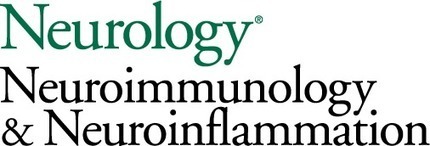


 Your new post is loading...
Your new post is loading...
